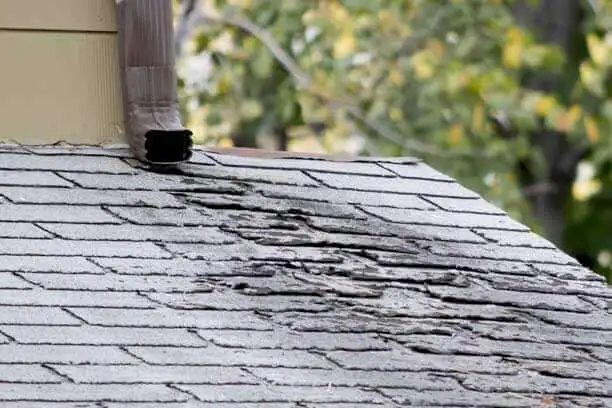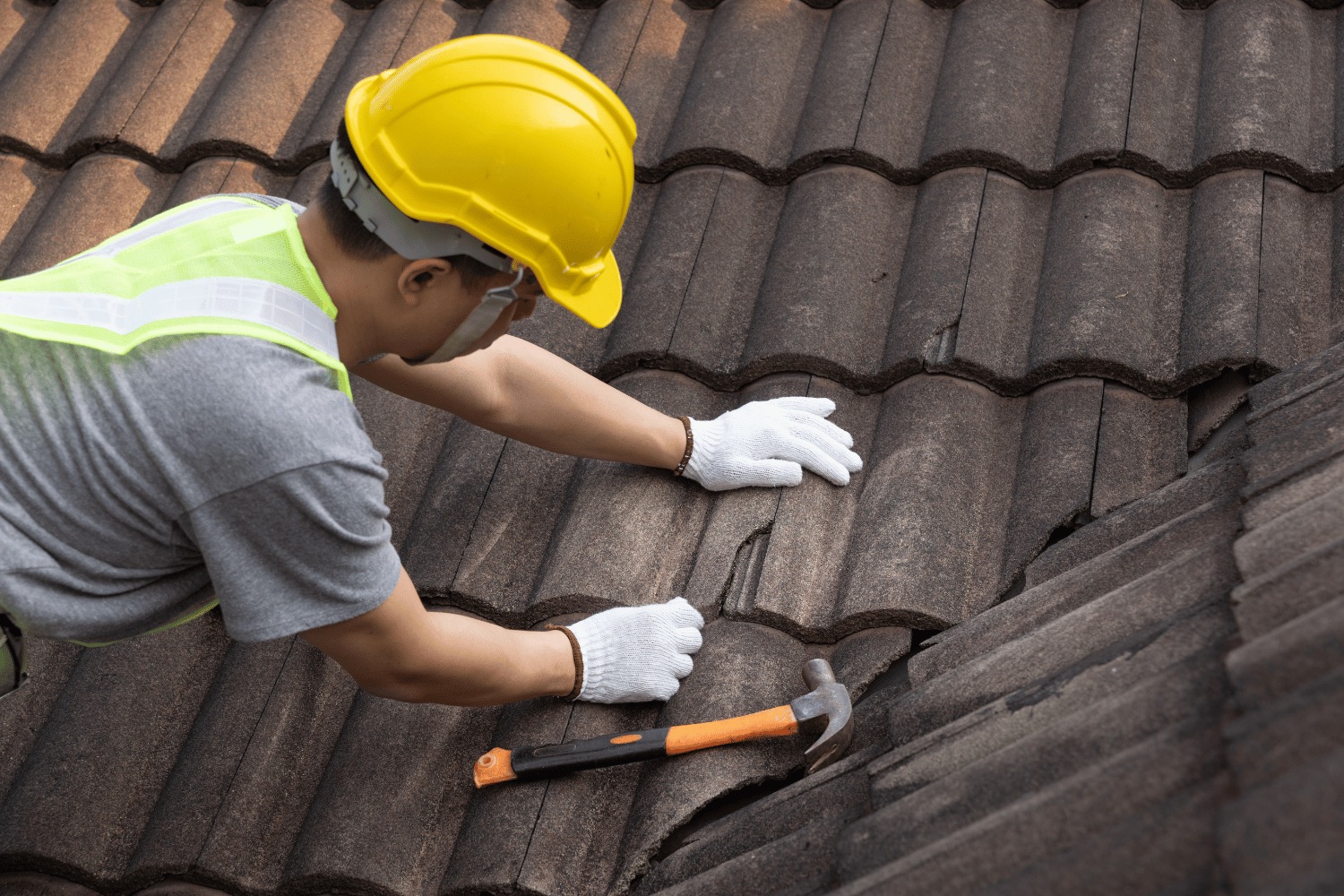Preventative Roof Upkeep: Tips to Stay Clear Of Costly Repair Services
To prevent costly fixings, you need to inspect your roof consistently for missing out on or damaged roof shingles, tidy your downspouts and gutters to protect against blockages, and trim overhanging branches. These basic steps can significantly prolong your roof's lifespan, and there's plenty extra you can do to safeguard your financial investment.
Check Your Roof Regularly
When you inspect your roof covering on a regular basis, you can catch potential issues before they end up being pricey fixings. Begin by examining for missing out on, broken, or crinkling shingles; these are indications that your roof may need interest.
After a storm, it's essential to examine your roof for damage triggered by high winds or hefty particles. Do not neglect to evaluate the bottom of your roof covering in the attic room; try to find signs of dampness or mold and mildew, which can show leakages. You ought to likewise watch out for granules in your rain gutters, as they go check can signify shingle deterioration. By taking these steps, you'll lengthen your roof's life-span and save yourself from unexpected expenses. Regular evaluations are essential to keeping a healthy roof.
Tidy Gutters and Downspouts
Regular roofing evaluations naturally cause a crucial task: cleaning your rain gutters and downspouts. Clogged up seamless gutters can create water to back up, bring about potential roof leaks and structural damage. To stop these concerns, make it a behavior to examine your gutters at the very least twice a year, specifically after heavy tornados or drop when leaves accumulate.
When you clean them, begin by eliminating particles like fallen leaves, branches, and dirt. You can make use of a scoop or your hands, yet bear in mind to put on gloves. After clearing the debris, purge the rain gutters with water to guarantee appropriate water drainage. Don't forget to examine downspouts for obstructions. You might require to utilize a plumber's serpent or a pipe to get rid of the obstruction. if water isn't streaming openly.
Address Overhanging Branches
Looming branches can present a significant danger to your roofing, so it is necessary to cut them consistently. Not only can they trigger damages throughout storms, yet they can likewise welcome parasites. Make it a practice to evaluate for any kind of indications of wear or damage to maintain your roofing in leading form.
Trim On A Regular Basis
One of the most crucial steps in roof covering maintenance is to cut those branches that hang also close to your home. Consistently cutting back these branches keeps your roof covering clear and decreases the risk of leakages and bugs. You don't need to tackle this task alone; hiring a professional arborist can assure reliable and secure cutting, securing your roofing and enhancing your home's overall appearance.
Check for Damage
 roof repair
roof repair
Look for Damaged or Missing Shingles
It's important to check your roof shingles frequently for any damage or missing items. Change missing out on roof shingles immediately to prevent further troubles if you find any type of concerns. Keep an eye on how the climate affects your roof covering, as extreme conditions can lead to use and tear.
Evaluate On A Regular Basis for Damage
Consistently inspecting your roofing for damage is vital to preserving its integrity and lengthening its lifespan. Search for indicators of wear, such as split, curled, or missing out on tiles. If left unaddressed, also small problems can lead to significant issues. Focus on areas where particles collects, as this can trap wetness and increase damage. Examine your roofing after heavy storms or strong winds, as these conditions can displace or harm shingles. Don't forget to examine the blinking around vents and smokeshafts; if it's compromised, it can cause leakages. By making roofing system assessments a normal component of your maintenance routine, you can capture troubles early and save yourself from expensive repair work down the line. Your roof will thank you!
Replace Missing Shingles Quickly
After looking for any damage throughout your inspections, you might discover that some shingles are missing or jeopardized. Don't wait to change them; prompt activity can stop further concerns. Missing out on shingles expose your roofing system to dampness, which can lead to leakages and even more extensive damage with time.
Make certain to make use of roof shingles that match your roof covering's color and design for a smooth look. Keeping your roofing in top shape is important for safeguarding your home and staying clear of pricey fixings down the line.
Monitor Weather Influence Frequently
As storms roll through your area, keeping a close eye on your roofing becomes vital. After each tornado, take a moment to evaluate your roofing system for any type of harmed or missing out on shingles. Climbing onto the roof covering isn't always essential; you can typically detect issues from the ground with binoculars.
 roof repair
roof repairMake Certain Correct Air Flow
While numerous property owners concentrate on the exterior and architectural facets of their roof coverings, guaranteeing correct ventilation is vital for keeping its durability and effectiveness. Poor air flow can lead to warmth accumulation and dampness accumulation, which can trigger damages over time.
Inspect your vents routinely to assure they're not blocked by insulation or particles. If you notice any kind of indicators of mold and mildew or mildew, it might indicate insufficient ventilation. Furthermore, take into consideration utilizing a powered ventilator if your home fights with air movement. Correct air flow not just boosts your roof's lifespan however additionally enhances energy performance, maintaining your home comfy year-round. By taking these actions, you're buying your roofing's health and wellness and staying clear of costly repair work down the line.
Try to find Indicators of Leakages
Proper ventilation aids avoid moisture build-up, but also with excellent air flow, it is necessary to keep an eye out for indicators of leakages. Beginning by checking your ceilings and wall surfaces for water spots or discoloration, which can suggest a leakage above. Do not fail to remember to examine your attic for wet areas, mold, or mold, as these can be very early indication. Try to find peeling paint or gurgling wallpaper, as well; these commonly signal wetness intrusion.
Outside, analyze your roof for missing out on shingles, fractures, or damaged blinking, as these susceptabilities can result in leakages. Take note of locations around vents, chimneys, and skylights, where leaks typically happen. If you see any kind of indicators, act promptly to address them prior to they get worse. Bear in mind, catching leaks early can conserve you from expensive fixings in the future. Frequently examining for these indicators will aid maintain your roofing system's stability and maintain your home secure and dry.
Set Up Expert Evaluations
 roof repair
roof repair
Objective for a minimum of one evaluation each year, preferably in the springtime or autumn, to straighten with seasonal adjustments. Throughout these evaluations, experts can determine potential dangers like missing tiles, damaged blinking, or indicators of mold. They'll also check for debris build-up that could result in water merging.
Don't wait on noticeable indicators of problem; taking aggressive steps can prolong your roofing system's life-span. Investing in normal assessments not only shields your home but likewise offers you tranquility of mind knowing your roofing remains in excellent condition.
Frequently Asked Inquiries
Just how Commonly Should I Perform Roof Inspections?
You should do roof covering inspections a minimum of twice a year, preferably in springtime and fall. Routine checks assist you detect potential issues early, conserving you money and time on costly repairs down the line.
What Tools Do I Need for Roof Covering Upkeep?
For roof covering upkeep, you'll need a sturdy ladder, safety harness, roof nails, a hammer, an utility blade, caulk, a trowel, and a flashlight. Do not forget handwear covers and security goggles to keep yourself shielded!
Can I Clean My Roof Myself?
Yes, you can clean your roofing system on your own. Simply make particular you have the right devices, put on safety equipment, and follow appropriate methods. It is necessary to be careful to prevent crashes and guarantee reliable cleaning.
How Can I Identify Roof Covering Leakages Early?
To identify roof leakages early, you'll want to examine your roof covering on a regular basis. Seek water spots, mold, or missing shingles. Focus after heavy rain, and do not be reluctant to check the attic for moist places.
What Are the Signs I Need a New Roofing System?
You'll need a new roof if you discover crinkled or missing shingles, consistent leaks, or water discolorations on ceilings. Furthermore, if your roof covering's age surpasses twenty years, it's a good idea to consider replacement earlier as opposed to later.
To avoid pricey repairs, you must evaluate your roofing routinely for missing out on or harmed roof shingles, clean your seamless gutters and downspouts to protect against clogs, and trim overhanging branches. Missing out on roof shingles reveal your roof to wetness, which can lead to leaks and even more substantial damages over time.
After each tornado, take a moment to check your roofing system for any kind of harmed or missing tiles.Outdoors, analyze your roof for missing out on shingles, splits, or damaged blinking, as these vulnerabilities can lead to leakages.To determine roof leakages early, you'll want to evaluate your roofing system routinely.